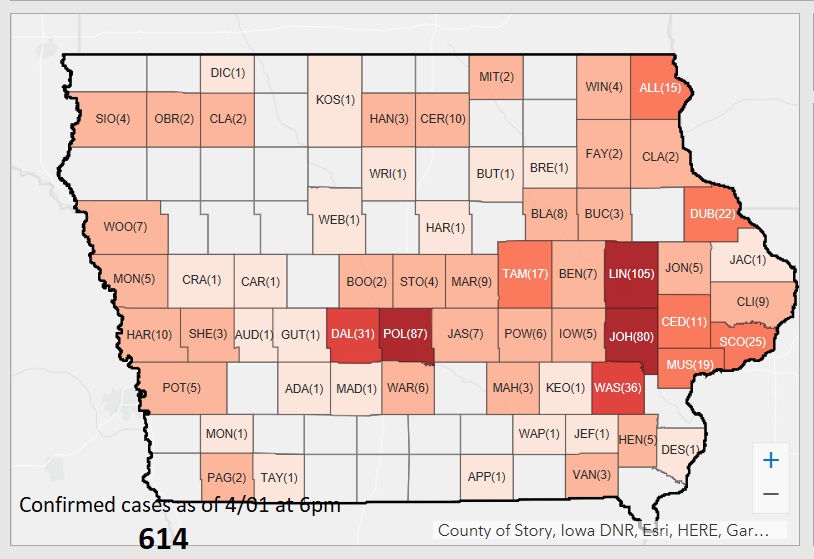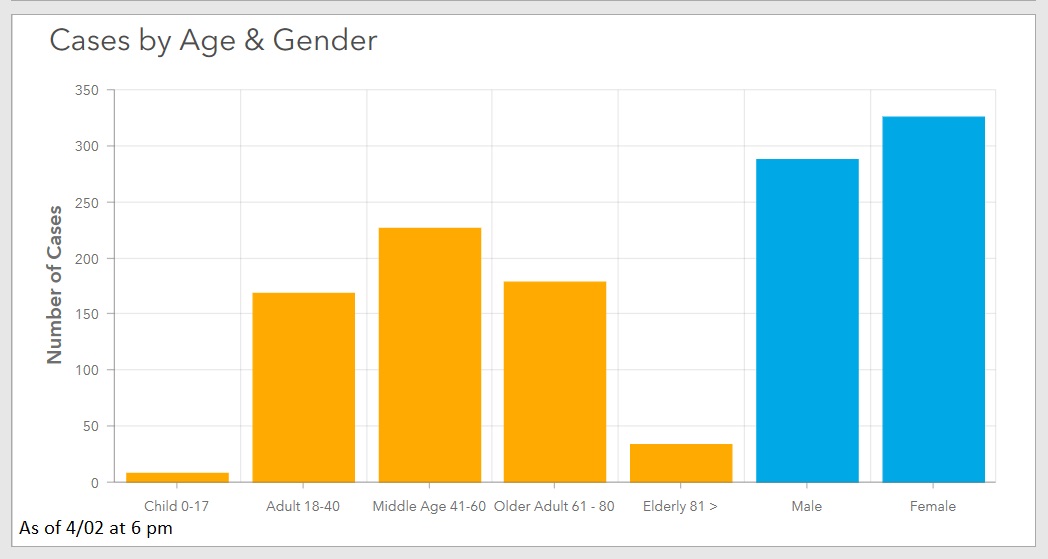Gov. Kim Reynolds on Thursday signed a new proclamation continuing the State Public Health Emergency Declaration. The proclamation orders the closure of schools until April 30, waiving time requirements as long as school districts put in place a continuous learning plan.
The proclamation also extends closures and limits placed on bars and restaurants, previously identified retail stores, prohibits social gatherings of more than 10 people, and continues to ban nonessential and elective surgeries until April 30.
And it extends and expands the previously granted regulatory relief and other measures until April 30. Violating any of Governor Reynolds’ public health orders is a simple misdemeanor.
Families can look for some sort of school participation after April 13 unless their school district wants to add days to the school year. Iowa Department of Education director Ann Lebo explained during the press conference that her department’s focus is on supporting Iowa’s schools, families and community partners “to ensure Iowa learners are safe, healthy, engaged and prepared.”
School districts have been given two options: either a voluntary option or a required option.
Under the voluntary option, schools can encourage students to participate but cannot require them to do so. Under the required options, students must participate, attendance is taken, work is graded, and credit is earned.
With the extension of the public health disaster, districts much indicate which they’ll use from April 13-30. They must notify the Department of Education of their decision by April 10.
Required continuous learning could include a combination of online learning and paper packets. Not all grade levels in a district must use the same methods.
“While we strongly encourage schools to provide continuous learning opportunities through one of these two options, they are not required to do so. Districts may chose not to offer continuous learning, in which case the department will follow up to be sure missed instruction time is made up in a manner that is appropriate with circumstances at that time,” Lebo said.
“The department will continue to be diligent in our efforts to be sure we have the supports available to provide local school districts with the flexibility to best address the needs of their students, families and communities,” she said.
The Iowa Department of Public Health (IDPH) on Thursday reported being notified of 66 additional positive cases of Iowans with COVID-19, for a total of 614 positive cases. According to IDPH, two additional deaths were reported; two older adults (61-80) of Linn County. There have been a total of 8,054 negative tests to date, which includes testing reported by the State Hygienic Lab and other labs.
According to IDPH, the locations and age ranges of the 66 individuals include:
• Allamakee County, 1 child (0-17 years), 2 adults (18-40 years), 4 middle-age adults (41-60 years), 1 older adult (61-80) years
• Black Hawk County, 1 middle-age adult (41-60 years)
• Boone County, 1 middle-age adult (41-60 years)
• Bremer County, 1 middle-age adult (41-60 years)
• Buchanan County, 1 adult (18-40 years)
• Cedar County, 1 adult (18-40 years), 1 middle-age adult (41-60 years)
• Cerro Gordo County, 2 middle-age adults (41-60 years)
• Clay County, 1 middle-age adult (41-60 years)
• Clinton County, 2 adults (18-40 years), 1 older adult (61-80 years)
• Dallas County, 1 adult (18-40 years), 3 middle-age adults (41-60 years)
• Delaware County, 1 older adult (61-80 years)
• Jefferson County, 1 adult (18-40 years)
• Johnson County, 1 adult (18-40 years), 3 middle-age adults (41-60 years)
• Jones County, 1 middle-age adult (41-60 years)
• Linn County, 3 adults (18-40 years), 4 middle-age adults (41-60 years), 1 older adult (61-80 years), 1 elderly adult (81+)
• Mahaska County, 1 middle-age adult (41-60 years)
• Marshall County, 1 middle-age adult (41-60 years)
• Muscatine County, 1 adult (18-40 years)
• Polk County, 2 adults (18-40 years), 1 middle-age adult (41-60 years), 3 older adults (61-80 years)
• Poweshiek County, 1 middle-age adult (41-60 years)
• Scott County, 3 middle-age adults (41-60 years), 1 older adult (61-80 years)
• Tama County, 2 adults (18-40 years), 1 middle-age adult (41-60 years)
• Van Buren County, 1 older adult (61-80 years)
• Warren County, 1 adult (18-40 years), 1 middle-age adult (41-60 years)
• Washington County, 1 adult (18-40 years), 1 older adult (61-80 years)
• Winneshiek County, 1 older adult (61-80 years)
• Woodbury County, 2 adults (18-40 years), 1 middle-age adult (41-60 years)


